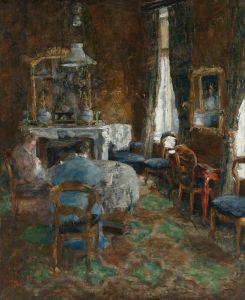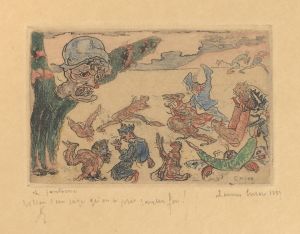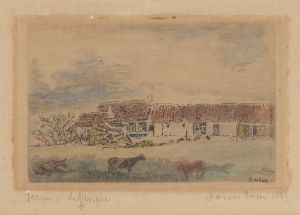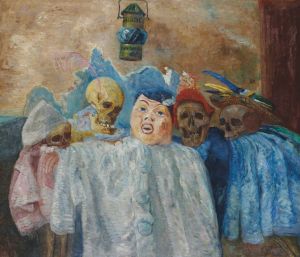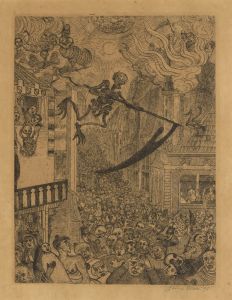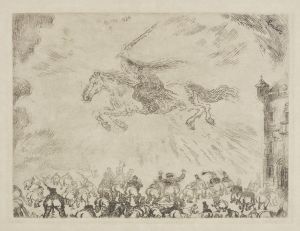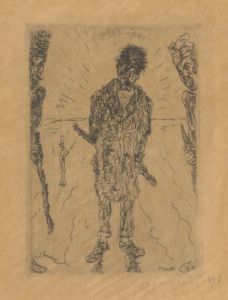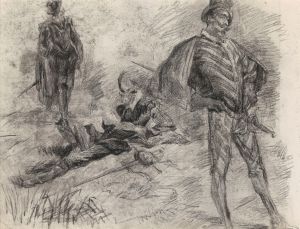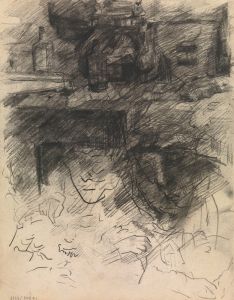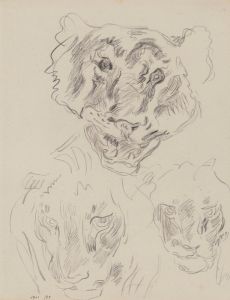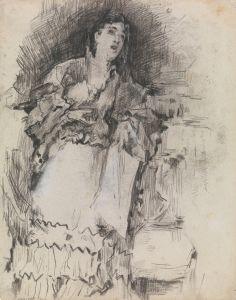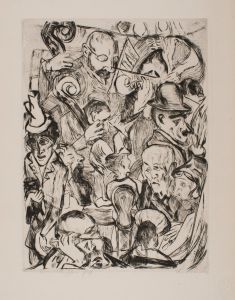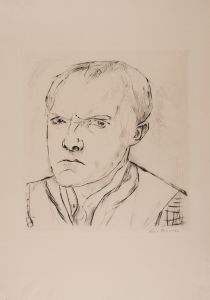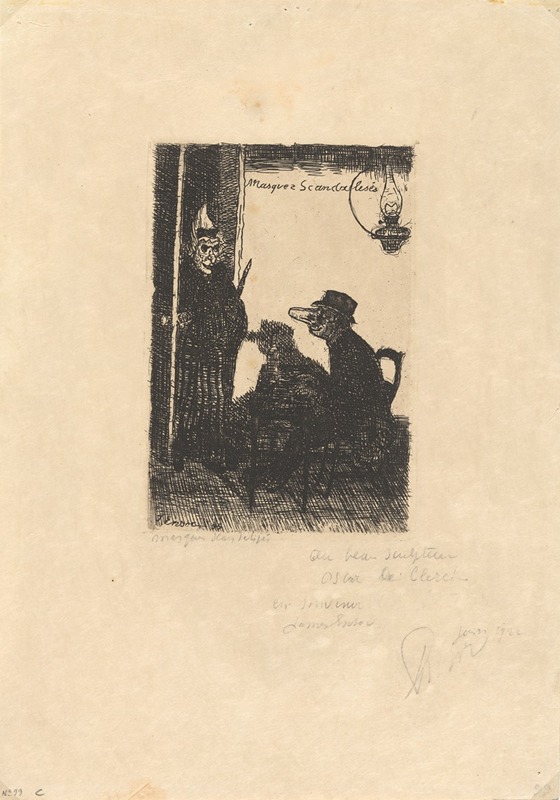
Masques scandalisés
A hand-painted replica of James Ensor’s masterpiece Masques scandalisés, meticulously crafted by professional artists to capture the true essence of the original. Each piece is created with museum-quality canvas and rare mineral pigments, carefully painted by experienced artists with delicate brushstrokes and rich, layered colors to perfectly recreate the texture of the original artwork. Unlike machine-printed reproductions, this hand-painted version brings the painting to life, infused with the artist’s emotions and skill in every stroke. Whether for personal collection or home decoration, it instantly elevates the artistic atmosphere of any space.
James Ensor's "Masques scandalisés" is a notable work by the Belgian painter, who is renowned for his unique and often provocative style. Ensor, born in 1860 in Ostend, Belgium, was a key figure in the Symbolist movement and is often associated with the later development of Expressionism. His work frequently features grotesque imagery, masks, and satirical themes, reflecting his critical view of society and human nature.
"Masques scandalisés," translated as "Scandalized Masks," is emblematic of Ensor's fascination with masks and their ability to conceal and reveal human emotions and societal critiques. While specific details about the creation date and current location of this painting are not widely documented, it is consistent with Ensor's broader body of work from the late 19th to early 20th century, a period during which he produced many of his most significant pieces.
Ensor's use of masks in his artwork serves as a metaphor for the duplicity and hypocrisy he perceived in society. The masks in "Masques scandalisés" are likely to be exaggerated and colorful, a common characteristic in Ensor's paintings, which often feature a vibrant palette and dynamic compositions. This use of color and form not only captures the viewer's attention but also enhances the emotional and psychological impact of the work.
The painting's title suggests a narrative of shock or outrage, possibly reflecting Ensor's own experiences with the art establishment and society at large. Throughout his career, Ensor faced criticism and misunderstanding from both critics and the public, who were often scandalized by his unconventional style and subject matter. This tension between the artist and society is a recurring theme in Ensor's work, and "Masques scandalisés" can be seen as a visual representation of this conflict.
Ensor's interest in masks can also be traced back to his childhood in Ostend, where his family owned a curiosity shop filled with exotic objects, including masks. This environment likely influenced his artistic development and his fascination with the theatrical and the macabre. Masks, in Ensor's work, serve as a powerful symbol of the hidden aspects of human identity and the performative nature of social interactions.
"Masques scandalisés" fits within Ensor's broader exploration of themes such as death, the grotesque, and the absurd. His work often blurs the line between reality and fantasy, inviting viewers to question their perceptions and the world around them. Ensor's paintings, including "Masques scandalisés," are characterized by their ability to provoke thought and elicit strong emotional responses, making them enduring subjects of study and appreciation in the art world.
In summary, "Masques scandalisés" is a quintessential example of James Ensor's artistic vision, showcasing his distinctive use of masks to critique and explore the complexities of human nature and society. Through this work, Ensor invites viewers to confront the masks they wear and the truths they conceal, making it a timeless piece that continues to resonate with audiences today.





